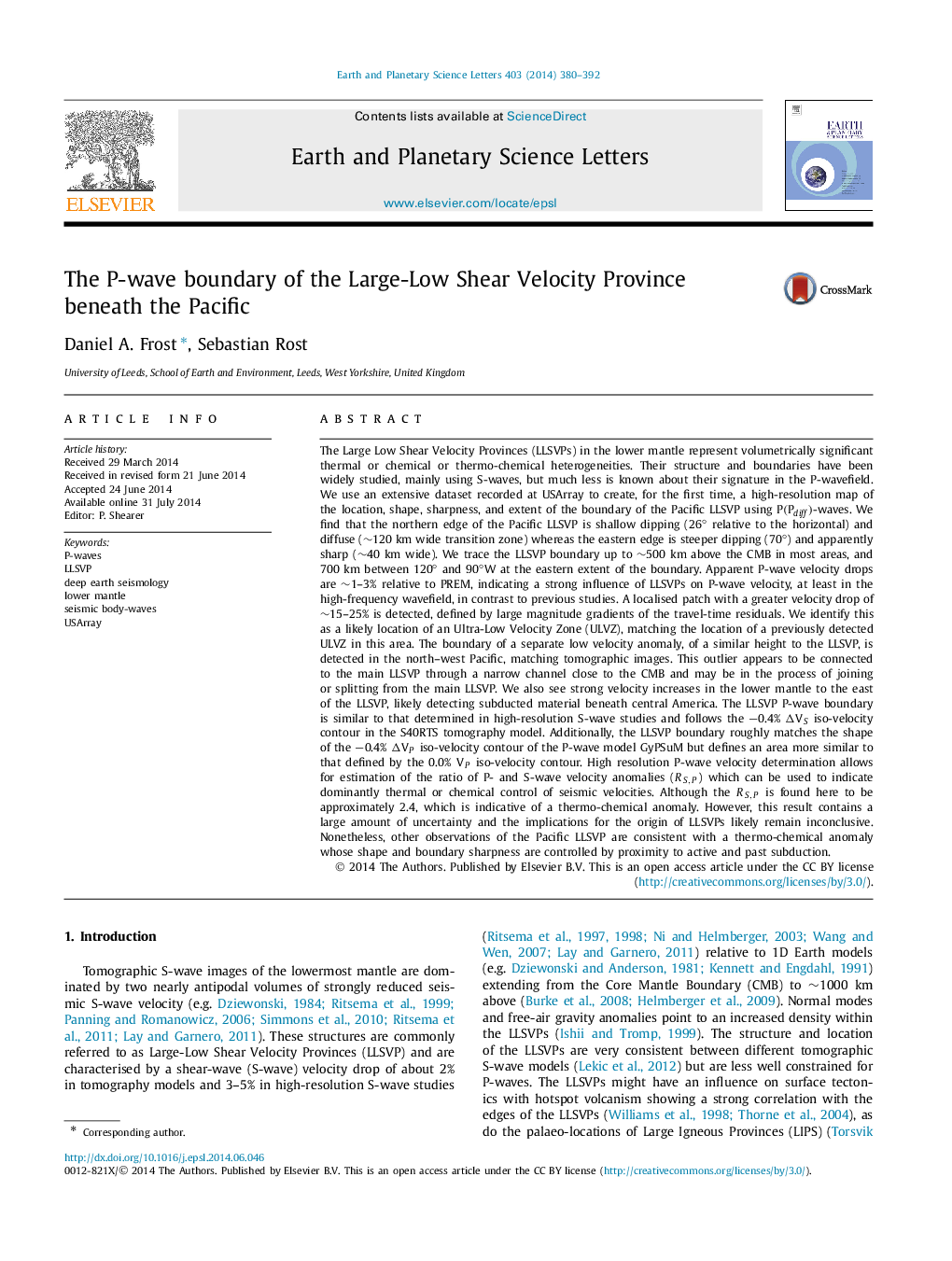| کد مقاله | کد نشریه | سال انتشار | مقاله انگلیسی | نسخه تمام متن |
|---|---|---|---|---|
| 6429152 | 1634753 | 2014 | 13 صفحه PDF | دانلود رایگان |

- P-wave travel-time deviations caused by the Pacific LLSVP are detected at USArray.
- We create the first high-resolution map of the LLSVP edge detected with P-waves.
- LLSVP boundary is seismically diffuse in the central Pacific, and sharp in the east.
- The edge shape and sharpness may be linked with dynamics and subduction history.
- P-wave LLSVP boundary roughly matches the S-wave boundary, except at the eastern edge.
The Large Low Shear Velocity Provinces (LLSVPs) in the lower mantle represent volumetrically significant thermal or chemical or thermo-chemical heterogeneities. Their structure and boundaries have been widely studied, mainly using S-waves, but much less is known about their signature in the P-wavefield. We use an extensive dataset recorded at USArray to create, for the first time, a high-resolution map of the location, shape, sharpness, and extent of the boundary of the Pacific LLSVP using P(Pdiff)-waves. We find that the northern edge of the Pacific LLSVP is shallow dipping (26° relative to the horizontal) and diffuse (â¼120 km wide transition zone) whereas the eastern edge is steeper dipping (70°) and apparently sharp (â¼40 km wide). We trace the LLSVP boundary up to â¼500 km above the CMB in most areas, and 700 km between 120° and 90°W at the eastern extent of the boundary. Apparent P-wave velocity drops are â¼1-3% relative to PREM, indicating a strong influence of LLSVPs on P-wave velocity, at least in the high-frequency wavefield, in contrast to previous studies. A localised patch with a greater velocity drop of â¼15-25% is detected, defined by large magnitude gradients of the travel-time residuals. We identify this as a likely location of an Ultra-Low Velocity Zone (ULVZ), matching the location of a previously detected ULVZ in this area. The boundary of a separate low velocity anomaly, of a similar height to the LLSVP, is detected in the north-west Pacific, matching tomographic images. This outlier appears to be connected to the main LLSVP through a narrow channel close to the CMB and may be in the process of joining or splitting from the main LLSVP. We also see strong velocity increases in the lower mantle to the east of the LLSVP, likely detecting subducted material beneath central America. The LLSVP P-wave boundary is similar to that determined in high-resolution S-wave studies and follows the â0.4% ÎVS iso-velocity contour in the S40RTS tomography model. Additionally, the LLSVP boundary roughly matches the shape of the â0.4% ÎVP iso-velocity contour of the P-wave model GyPSuM but defines an area more similar to that defined by the 0.0% VP iso-velocity contour. High resolution P-wave velocity determination allows for estimation of the ratio of P- and S-wave velocity anomalies (RS,P) which can be used to indicate dominantly thermal or chemical control of seismic velocities. Although the RS,P is found here to be approximately 2.4, which is indicative of a thermo-chemical anomaly. However, this result contains a large amount of uncertainty and the implications for the origin of LLSVPs likely remain inconclusive. Nonetheless, other observations of the Pacific LLSVP are consistent with a thermo-chemical anomaly whose shape and boundary sharpness are controlled by proximity to active and past subduction.
Journal: Earth and Planetary Science Letters - Volume 403, 1 October 2014, Pages 380-392